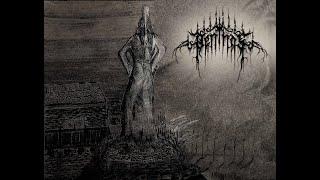
Nagarjuna's "Fundamental Wisdom" - Day 1
Комментарии:

Thanks om ah hum
Ответить
In, existence do any concepts or comments make sense? Have a peaceful day.
Ответить
Đức Đạt Lai Lạt Ma chia sẻ về kinh nghiệm tu tập và sự hiểu biết của mình về triết học Phật giáo, đặc biệt là về khái niệm "Tánh Không" (Shunyata).
Ngài nhấn mạnh tầm quan trọng của việc sử dụng trí tuệ để phân tích và hiểu sâu về bản chất của sự vật, thay vì chỉ dựa vào niềm tin mù quáng.
Triết lý về Tánh Không
Ngài giải thích rằng các phiền não như giận dữ, tham lam, chấp ngã... đều bắt nguồn từ sự hiểu biết sai lầm về bản chất của sự vật.
Khi hiểu sâu về Tánh Không, nghĩa là sự vật không có tự tính độc lập, thì các phiền não sẽ giảm đi đáng kể.
Ngài chia sẻ về kinh nghiệm cá nhân trong việc áp dụng triết lý này để giảm bớt các cảm xúc tiêu cực.
Các trường phái triết học Phật giáo
Ngài đề cập đến các trường phái triết học Phật giáo như Duy Thức (Cittamatra), Trung Quán (Madhyamaka) và các quan điểm khác về vấn đề Tánh Không.
Ngài nêu ra những điểm khác biệt giữa các trường phái và chia sẻ về cách tiếp cận của mình trong việc giảng dạy triết lý này.
Ý nghĩa của Tánh Không
Ngài giải thích rằng theo Phật giáo, sự vật không có tự tính độc lập mà chỉ tồn tại một cách tương đối, phụ thuộc vào các yếu tố khác.
Ngài liên hệ quan điểm này với các phát hiện của khoa học hiện đại, đặc biệt là lĩnh vực vật lý lượng tử.
Ngài nhấn mạnh tầm quan trọng của việc hiểu sâu về Tánh Không trong việc giảm thiểu các phiền não và xây dựng một xã hội tốt đẹp hơn.
Vai trò của giáo dục
Ngài chia sẻ về tầm quan trọng của việc đưa triết lý Phật giáo, đặc biệt là về Tánh Không, vào hệ thống giáo dục một cách có hệ thống và hiệu quả.
Ngài nhấn mạnh rằng giáo dục không chỉ nên tập trung vào kiến thức khoa học kỹ thuật mà còn phải chú trọng đến các giá trị nhân văn và tâm linh.
Ngài tóm lược lại các ý chính về Tánh Không và vai trò của nó trong việc giảm thiểu các phiền não.
Ngài khuyến khích mọi người, đặc biệt là các nhà khoa học và nhà giáo dục, nghiên cứu và ứng dụng triết lý này vào cuộc sống để tạo ra một thế giới tốt đẹp hơn.
Qua bài thảo luận, Đức Đạt Lai Lạt Ma đã chia sẻ sâu sắc về triết lý Phật giáo, đặc biệt là về khái niệm Tánh Không, và nhấn mạnh tầm quan trọng của việc hiểu biết và ứng dụng nó trong cuộc sống hàng ngày cũng như trong lĩnh vực giáo dục.

🙏🙏🙏
Ответить
I have found most all of his holinesses Indian siddhas homes. They are all prayed to by locals of the area. They are Atisa, Tilopa, Naropa, Virupa, Avalokiteshwara, Buddha Amitabh, Niguma, Sukhasiddhi, Maitripada and many many more.
Ответить
Om Mani Padme Hum ❤
Ответить
Long Live His Holiness The 14th Dalai Lama ❤
Ответить
Isnt he a pedo?
Ответить
Nagaarnun phi.osophy equa, to theory of relativity
Ответить
Aint avalokeshwara the kannonji in Japan the same Guangui in Mandarin? Aint he the same kannan krishna ? It refers again to myanmar mayans since it was of lord maaayon ? Be it mayon mountain. In a way both Hinduism and Buddhism shared common gods in a different name. Hanuman is the monkey king in an another culture. Manu is noah or adam is enki. Great trib is end of kali yuga. They all said the same in a unique way. When they try to tame it under a name or identity, it then is never truth. All then became manipulation force control and fear. Not of positive nor of love and true compassion. Religious truths may vary but universal truth in essence does not change. Its the water and life my friend. We often failed to see our own inside the dark deep state realities. We are never free but maya. We claim to be free but never free from something. Humans are simply ego heads. What we been told is big fat lies. Truth is labelled as someone's personal or a group's their own validation. The real truth is whatever we 'know' is a lie , maya, or temporary.
Ответить
Is best if you have subtitles pls 🙏
Ответить
Wisdom the future on sports is on the news😋
Ответить
Emptiness is possibility, the creative, the diverse, holy host servants made into a temporal, therefore most powerful, force for the way called love and it supports change which can be seen as the evolution into more heavens. Who paints emptiness as bad? "Nothing lasts forever" is truth and freedom. Absolutes are sailboats that can turn into jail.
Ответить
Bravo! Beautiful! Homages! 🎬🎬🎬 JAR
Ответить
Long live His Holiness ❤️❤️
Ответить
🌷🌷🌷🌺🌺🌺🌸🌸🌸🙏🏻🙏🏻🙏🏻
Ответить
제가 지금 살고있는 집은요 저에게 생명의 기상을 일으키는 집입니다. 왜냐면은요 창문을 열면은 많은 높은 빌딩들이 남산의 탑이
우뚝 솟은 아래에 굴복되어 엎드려 있는 꼴이여서 저는 그 멋진 남산이 탑을 이고 정면에서 마치 저와 맞장 뜨자고 하는것 같아요
이전에 살던 집도 오래된 집이었지만 그집 아래에 많은 집들이 펼쳐져 있었네요 마치 제가 옥상에 올라가 서면 그 집들은 수많은 대중같았어요
그냥 살다보면 그렇다는걸 알았어요 저는 지금 사는 집이 너무 행복하고 편안하고 좋습니다. ㅎ

큰일 났네요 이제 계속 도와 달라고 전화 오네요 돈은 좋은거지만 저 이러다가 제 인생 완전 노동판 인생으로 끝나버릴수도 있겠어요
아니면 여지없이 털어버려야하나 음 음 .....

❤️ 🙏 🙏 🙏
Ответить
Where is Thupten Jinpa to translate this very profound teaching? Unfortunately this translator must be a very good scholar, but from his translation one can feel he is not a practitioner and lacking realization of the materials he is translating. Cuz it lacks the cellular resonance in the listener!
Ответить
Om Tara Tuttare Ture Soha
Ответить
.. know 💩 factor..
Ответить
When we prayed with the Dalai Lama yesterday, I was alone in my livingroom,
yet I felt the pressure of other beings.
my empty living room felt crowded.
This is very powerful stuff. I only wish I could understand what's being said better.
I will continue to listen.

The Eightfold Path and the Practice of Dhamma
Because the roots of ignorance are so intimately entwined with the fabric of the psyche, the unawakened mind is capable of deceiving itself with breathtaking ingenuity. The solution therefore requires more than simply being kind, loving, and mindful in the present moment. The practitioner must equip him- or herself with the expertise to use a range of tools to outwit, outlast, and eventually uproot the mind’s unskillful tendencies. For example, the practice of generosity (dana) erodes the mind’s habitual tendencies towards craving and teaches valuable lessons about the motivations behind, and the results of, skillful action. The practice of virtue (sila) guards one against straying wildly off-course and into harm’s way. The cultivation of goodwill (metta) helps to undermine anger’s seductive grasp. The ten recollections offer ways to alleviate doubt, bear physical pain with composure, maintain a healthy sense of self-respect, overcome laziness and complacency, and restrain oneself from unbridled lust. And there are many more skills to learn.
The good qualities that emerge and mature from these practices not only smooth the way for the journey to Nibbana; over time they have the effect of transforming the practitioner into a more generous, loving, compassionate, peaceful, and clear-headed member of society.
The individual’s sincere pursuit of Awakening is thus a priceless and timely gift to a world in desperate need of help.
Discernment (pañña)
The Eightfold Path is best understood as a collection of personal qualities to be developed, rather than as a sequence of steps along a linear path. The development of right view and right resolve (the factors classically identified with wisdom and discernment) facilitates the development of right speech, action, and livelihood (the factors identified with virtue). As virtue develops so do the factors identified with concentration (right effort, mindfulness, and concentration).
Likewise, as concentration matures, discernment evolves to a still deeper level. And so the process unfolds: development of one factor fosters development of the next, lifting the practitioner in an upward spiral of spiritual maturity that eventually culminates in Awakening.
The long journey to Awakening begins in earnest with the first tentative stirrings of right view — the discernment by which one recognizes the validity of the four Noble Truths and the principle of kamma.
One begins to see that one’s future well-being is neither predestined by fate, nor left to the whims of a divine being or random chance. The responsibility for one’s happiness rests squarely on one’s own shoulders. Seeing this, one’s spiritual aims become suddenly clear: to relinquish the habitual unskillful tendencies of the mind in favor of skilful ones. As this right resolve grows stronger, so does the heartfelt desire to live a morally upright life, to choose one’s actions with care.
At this point many followers make the inward commitment to take the Buddha’s teachings to heart, to become “Buddhist” through the act of taking refuge in the Triple Gem: the Buddha (both the historical Buddha and one’s own innate potential for Awakening), the Dhamma (both the Buddha’s teachings and the ultimate Truth towards which they point), and the Sangha (both the unbroken monastic lineage that has preserved the teachings since the Buddha’s day, and all those who have achieved at least some degree of Awakening). With one’s feet thus planted on solid ground, and with the help of an admirable friend or teacher (kalyanamitta) to guide the way, one is now well-equipped to proceed down the Path, following in the footsteps left by the Buddha himself.
Virtue (sila)
Right view and right resolve continue to mature through the development of the path factors associated with sila, or virtue — namely, right speech, right action, and right livelihood.
These are condensed into a very practical form in the five precepts, the basic code of ethical conduct to which every practicing Buddhist subscribes: refraining from killing, stealing, sexual misconduct, lying, and using intoxicants. Even the monks’ complex code of 227 rules and the nuns’ 311 ultimately have these five basic precepts at their core.

Concentration (samadhi)
Having gained a foothold in the purification of one’s outward behavior through the practice of sila, the essential groundwork has been laid for delving into the most subtle and transformative aspect of the path: meditation and the development of samadhi, or concentration. This is spelled out in detail in the final three path factors: right effort, by which one learns how to favor skillful qualities of mind over unskillful ones; right mindfulness, by which one learns to keep one’s attention continually grounded in the present moment of experience; and right concentration, by which one learns to immerse the mind so thoroughly and unwaveringly in its meditation object that it enters jhana, a series of progressively deeper states of mental and physical tranquillity.
Right mindfulness and right concentration are developed in tandem through satipatthana (”frames of reference” or “foundations of mindfulness”), a systematic approach to meditation practice that embraces a wide range of skills and techniques. Of these practices, mindfulness of the body (especially mindfulness of breathing) is particularly effective at bringing into balance the twin qualities of tranquillity (samatha) and insight (vipassana), or clear-seeing. Through persistent practice, the meditator becomes more adept at bringing the combined powers of samatha-vipassana to bear in an exploration of the fundamental nature of mind and bodyAs the meditator masters the ability to frame his immediate experience in terms of anicca (inconstancy), dukkha, and anatta (not-self), even the subtlest manifestations of these three characteristics of experience are brought into exquisitely sharp focus.
At the same time, the root cause of dukkha — craving — is relentlessly exposed to the light of awareness. Eventually craving is left with no place to hide, the entire karmic process that fabricates dukkha unravels, the eightfold path reaches its noble climax, and the meditator gains, at long last, his or her first unmistakable glimpse of the Unconditioned Nibbana the Eternal Bliss.
Awakening
This first awakenment experience, known as stream-entry (sotapatti), is the first of four progressive stages of Awakening, each of which entails the irreversible shedding or weakening of several fetters (samyojana), the manifestations of ignorance that bind a person to the cycle of birth and death.
Stream-entry marks an unprecedented and radical turning point both in the practitioner’s current life and in the entirety of his or her long journey in samsara. For it is at this point that any lingering doubts about the truth of the Buddha’s teachings disappear; it is at this point that any belief in the purifying efficacy of rites and rituals evaporates; and it is at this point that the long-cherished notion of an abiding personal “self” falls away. The stream-enterer is said to be assured of no more than seven future rebirths (all of them favorable) before eventually attaining full Awakening.
But full Awakening is still a long way off. As the practitioner presses on with renewed diligence, he or she passes through two more significant landmarks:
once-returning (sakadagati), which is accompanied by the weakening of I the fetters of sensual desire and ill-will, and non-returning (agati), in which these two fetters are uprooted altogether.
The final stage of Awakening — arahatta — occurs when even the most refined and subtle levels of craving and conceit are irrevocably extinguished.
At this point the practitioner — now an arahant, or “worthy one” — arrives at the end-point of the Buddha’s teaching. With ignorance, suffering, stress, and rebirth having all come to their end, the arahant at last can utter the victory cry first proclaimed by the Buddha upon his Awakening:
“Birth is ended, the holy life fulfilled, the task done! There is nothing further for the sake of this world.”
— MN 36
The arahant lives out the remainder of his or her life inwardly enjoying the bliss of Nibbana, secure at last from the possibility of any future rebirth. When the arahant’s aeons-long trail of past kamma eventually unwinds to its end, the arahant dies and he or she enters into parinibbana — total Unbinding. Although language utterly fails at describing this extraordinary event, the Buddha likened it to what happens when a fire finally burns up all its fuel.
“The serious pursuit of happiness” Buddhism is sometimes naïvely criticized as a “negative” or “pessimistic” religion and philosophy. Surely life is not all misery and disappointment: it offers many kinds of happiness and sublime joy. Why then this dreary Buddhist obsession with unsatisfactoriness and suffering?

The Buddha based his teachings on a frank assessment of our plight as humans: there is unsatisfactoriness and suffering in the world. No one can argue this fact. Dukkha lurks behind even the highest forms of worldly pleasure and joy, for, sooner or later, as surely as night follows day, that happiness must come to an end. Were the Buddha’s teachings to stop there, we might indeed regard them as pessimistic and life as utterly hopeless. But, like a doctor who prescribes a remedy for an illness, the Buddha offers both a hope (the third Noble Truth) and a cure (the fourth). The Buddha’s teachings thus give cause for unparalleled optimism and joy. The teachings offer as their reward the noblest, truest kind of happiness, and give profound value and meaning to an otherwise grim existence. One modern teacher summed it up well:
“Buddhism is the serious pursuit of happiness.”
Theravada Comes West
Until the late 19th century, the teachings of Theravada were little known outside of southern Asia, where they had flourished for some two and one-half millennia. In the past century, however, the West has begun to take notice of Theravada’s unique spiritual legacy in its teachings of Awakening. In recent decades this interest has swelled, with the monastic Sangha from various schools within Theravada establishing dozens of monasteries across Europe and North America. Increasing numbers of lay meditation centers, founded and operated independently of
the monastic Sangha, strain to meet the demands of lay men and women — Buddhist and otherwise — seeking to learn selected aspects of the Buddha’s teachings.
The turn of the 21st century presents both opportunities and dangers for Theravada in the West: Will the Buddha’s teachings be patiently studied and put into practice, and allowed toestablish deep roots in Western soil, for the benefit of many generations to come? Will the current popular Western climate of “openness” and cross-fertilization between spiritual traditions lead to the emergence of a strong new form of Buddhist practice unique to the modern era, or will it simply lead to confusion and the dilution of these priceless teachings? These are open questions; only time will tell.
Spiritual teachings of every description inundate the media and the marketplace today. Many of today’s popular spiritual teachings borrow liberally from the Buddha, though only rarely do they place the Buddha’s words in their true context. Earnest seekers of truth are therefore often faced with the unsavory task of wading through fragmentary teachings of dubious accuracy.
How are we to make sense of it all?
Fortunately the Buddha left us with some simple guidelines to help us navigate through this bewildering flood. Whenever you find yourself questioning the authenticity of a particular teaching, heed well the Buddha’s advice to his stepmother:
[The teachings that promote] the qualities of which you may know, ‘These qualities lead to passion, not to dispassion; to being fettered, not to being unfettered; to accumulating, not to shedding; to self-aggrandizement, not to modesty; to discontent, not to contentment; to entanglement, not to seclusion; to laziness, not to aroused persistence; to being burdensome, not to being unburdensome’: You may categorically hold, ‘This is not the Dhamma, this is not the Vinaya, this is not the Teacher’s instruction.’ [As for the teachings that promote] the qualities of
which you may know, ‘These qualities lead to dispassion, not to passion; to being unfettered, not to being fettered; to shedding, not to accumulating; to modesty, not to self-aggrandizement; to contentment,not to discontent; to seclusion, not to entanglement; to aroused persistence, not to laziness; to being unburdensome, not to being burdensome’: You may categorically hold, ‘This is the Dhamma, this is the Vinaya, this is the Teacher’s instruction.’
— AN 8.53
The truest test of these teachings, of course, is whether they yield the
promised results in the crucible of your own heart.
The Buddha presents the challenge; the rest is up to you.
END
NAM MO SHAKYAMUNI BUDDHA.( 3
TIMES ).
RESEARCH THEREVADA RELIGION BY BACH LIEN HOA.( TAM THANH
).MHDT.30/3/2012.
10 Life Lessons From Buddha (Buddhism)
Bhagawan Buddha says ‘There is little dust in the eyes of people, remove that ignorance, they will walk on the path of Dhamma. Being learned and skillful in craft, Disciplined in morals and well cultivated, Being gifted with words of wisdom, Each is a great blessing – Mangala Sutta
To share the genuine Theravada Buddhism with the people of the world.
To Study, teach and practice Theravada Buddhism as found in Pali Tipitaka containing the original teachings of the Buddha.

VINAYA PITAKA – BUDDHIST ETHICS
Introduction to Vinaya both as Theory and Practice
Study of the various parts of the Vinaya as rules of Moral Discipline Vinaya as “The Life blood of Dhamma”
Importance of disciplined conduct in Theravada.
The background stories of Vinaya rules reveal their spiritual importance.
The practical Handbook called Patimokkha as the essential core of the monastic discipline.
Violation of monastic conduct in the form of the seven ‘Offences – apattis’
A general review of the concept of Sikkhapada – Vinaya discipline and apattis their violations.
SUTTA PITAKA – BUDDHIST PHILOSOPHY
Sutta pitaka uses conventional languages to enunciate and practice the Dhamma as distinct from Abhidhamma’s non-conventional, paramattha ultimate terms.
Introduction to the Suttanata Pitaka and how it differs from the Vinaya and Abhidhamma Pitakas.
Dhammacakkapavatana Sutta – Basic teaching of the Buddha on four Noble Truths.
Topics of Dhammacakkappavattana sutta.
The two extremes.
The Middle Path was distinct from the two extremes.
The Three phases and twelve ways of the Wheel of truth Sutta.
Digha, Majjhima, Kuddaka, Anguttara, Samyutta Nikayas-study of selected suttas
ABHIDHAMMA PITAKA- BUDDHIST PSYCHOLOGY
Introduction to the Abhidhamma Pitaka and how it is distinct from Vinaya and Sutta Pitakas. The distinction between pannatti (conventional) and paramattha (ultimate) dhammas. The various categories of analysis of paramattha Citta, consciousness analyzed into 89 or 121 states Cetasikas constitute mental factors of consciousness. What is cetasika. The four characteristics of cetasika as it functions as an associate of citta. What is the nature of Citta (interpretation). How to associate citta and cetasika dhammas – sampayoga. How cetasikas are associated with cittas – sahagata. How cetasikas function as associates of a citta.
HISTORY OF THERAVADA BUDDHISM
Definition of Dhamma as found in Theravada.
Different viewpoints regarding Dhamma.
The origin of Buddhist culture.
Ancient as found in India and elsewhere.
Practice of Buddhist culture in daily life as found in different lands.
Buddhist ceremonies – cultural, moral and their spiritual significance.
BASIC PRACTICES OF THERAVADA BUDDHA DHAMMA
The significance of the 3 Ratanas, The three ways of paying homage.
The highest attributes of the threefold refuge.
The basic concepts that everyone should understand. What is wholesome, (Kusala), unwholesome, (Akusala) – Good and Bad, they are the actual qualities and knowledge.
The ten meritorious and the ten de-meritorious actions form one’s conduct, thus making life upward-moving or downward-moving the mental development.
The threefold basic principle : Dana, Sila, Bhavana and Sila, Samadhi, Panya
The ten perfections – Paramis
Understanding the significance of kamma and its result in life
The common pali sutta chanting and elaboration of these chanting.
PRACTICE OF MEDITATION
Four sublime states – Brahma Viharas – Metta, Karuna, Mudita, Uppekkha
How to radiate and how they differ from each other.
Benefits of meditation in Theravada Buddhism
Samatha and Vipassana Meditation.
Meditation and its 40 subjects.
LIFE OF BUDDHA
Buddha’s birth and early life
Various early life events – Mahabhinikkhamana Buddhas’ struggle for awakenment – 6 years of penance
The basic fallacies of self mortification and sensual indulgence.
The struggle for Enlightenment – Bodhi a detailed study
Setting in motion the Wheel of Truth – Dhammacakkappavattana
The spreading of the Dhamma – Establishment of Sangha
Formation of the holy order of Nuns – Bhikkhunis
The Great Demise – Mahaparinirvana.
PALI LANGUAGE AND LITERATURE
To learn pali canonical language
Pali Grammar
Pali language history
Pali literature
Pali works
Sutta Piμaka
(Five nik±yas, or collections)
1. D2gha-nik±ya [34 suttas; 3 vaggas, or chapters (each a book)]
(1) S2lakkhandavagga-p±1⁄4i (13 suttas)
(2) Mah±vagga-p±1⁄4i (10 suttas)
(3) P±μikavagga-p±1⁄4i (11 suttas)
2. Majjhima-nik±ya [152 suttas;15 vaggas; divided in 3 books,
5 vaggas each, known as paoo±sa (‘fifty’)]
(1) M3lapaoo±ssa-p±1⁄4i (the ‘root’ fifty)
1. M3lapariy±yavagga (10 suttas)
2. S2han±davagga (10 suttas)
3. Tatiyavagga (10 suttas)
4. Mah±yamakavagga (10 suttas)
5. C31⁄4ayamakavagga (10 suttas)
(2) Majjhimapaoo±sa-p±1⁄4i (the ‘middle’ fifty)
6. Gahapati-vagga (10 suttas)
7. Bhikkhu-vagga (10 suttas)
8. Paribb±jaka-vagga (10 suttas)
9. R±ja-vagga (10 suttas)
10. Br±hmana-vagga (10 suttas)
(3) Uparipaoo±sa-p±1⁄4i (means ‘more than fifty’)
11. Devadaha-vagga (10 suttas)
12. Anupada-vagga (10 suttas)
13. Suññata-vagga (10 suttas)
14. Vibhaaga-vagga (12 suttas)
15. Sa1⁄4±yatana-vagga (10 suttas)

3. Sa1⁄2yutta-nik±ya [2,904 (7,762) suttas; 56 sa1⁄2yuttas; 5 vaggas; divided into 6 books]
(1) Sag±thavagga-sa1⁄2yutta-p±1⁄4i (11 sa1⁄2yuttas)
(2) Nid±navagga-sa1⁄2yutta-p±1⁄4i (10 sa1⁄2yuttas)
(3) Khandavagga-sa1⁄2yutta-p±1⁄4i (13 sa1⁄2yuttas)
(4) Sa1⁄4±yatanavagga-sa1⁄2yutta-p±1⁄4i (10 sa1⁄2yuttas)
(5) Mah±vagga-sa1⁄2yutta-p±1⁄4i Vol I ( 6 sa1⁄2yuttas)
(6) Mah±vagga-sa1⁄2yutta-p±1⁄4i Vol II ( 6 sa1⁄2yuttas)
4. Aaguttara-nik±ya [9,557 suttas; in11 nip±tas, or groups, arranged purely numerically; each nip±ta has several vaggas; 10 or more suttas in each vagga; 6 books]
(1) Eka-Duka-Tika-nipata-p±1⁄4i (ones, twos, threes)
(2) Catukka-nipata-p±1⁄4i (fours)
(3) Pañcaka-nipata-p±1⁄4i (fives)
(4) Chakka-Sattaka-nipata-p±1⁄4i (sixes, sevens)
(5) Aμμhaka-Navaka-nipata-p±1⁄4i (eights, nines)
(6) Dasaka-Ekadasaka-nipata-p±1⁄4i (tens, elevens)
5. Khuddaka-nik±ya [the collection of small books, a miscellaneous gather- ing of works in 18 main sections; it includes suttas, compilations of doctrinal notes, histories, verses, and commentarial literature that has been incorporated into the Tipiμaka itself.; 12 books]
(1) Kuddhakap±tha,Dhammapada & Ud±na-p±1⁄4i
1. Kuddhakap±tha (nine short formulae and suttas, used as a training manual for novice bhikkhus)
2. Dhammapada (most famous of all the books of the Tipiμaka; a collection of 423 verses in 26 vaggas)
3. Ud±na (in 8 vaggas, 80 joyful utterances of the Buddha, mostly in verses, with some prose accounts of the circumstances that elicited the utterance)
(2) Itivuttaka, Suttanip±ta-p±1⁄4i 4. Itivuttaka (4 nip±tas, 112 suttas, each beginning, “iti vutta1⁄2 bhagavata” [thus was said by the Buddha]) 5. Suttanip±ta (5 vaggas; 71 suttas, mostly in verse; contains many of the best known, most popular suttas of the Buddha
(3) Vim±navatthu, Petavatthu, Therag±th± & Therig±th±-p±1⁄4i
6. Vim±navatthu (Vim±na means mansion; 85 poems in 7 vaggas about acts of merit and rebirth in heavenly realms) 7. Petavatthu (4 vaggas, 51 poems describing the miserable beings [petas] born in
unhappy states due to their demeritorious acts) 8. Therag±th± (verses of joy and delight after the attainment of arahatship from 264 elder bhikkhus; 107 poems, 1,279 g±thas) 9. Therig±th± (same as above, from 73 elder nuns; 73 poems, 522 g±thas)
(4) J±taka-p±1⁄4i, Vol. I
(5) J±taka-p±1⁄4i, Vol II
10. J±taka (birth stories of the Bodisatta prior to his birth as Gotama Buddha; 547 stories in verses, divided into nip±ta according to the number of verses required to tell the story. The full J±taka stories are actually in the J±taka commentaries that explain the story behind the verses.
(6) Mah±nidessa-p±1⁄4i
(7) C31⁄4anidessa-p±1⁄4i
11. Nidessa (commentary on two sections of Suttanip±ta)
Mah±nidessa: commentary on the 4th vagga C31⁄4anidessa: commentary on the 5th vagga andthe Khaggavis±oa sutta of the 1st vagga
(8) Paμisambhid±magga-p±1⁄4i
12. Paμisambhid±magga (an abhidhamma-style detailed analysis of the Buddha’s teaching, drawn from all portions of the Vin±ya and Sutta Piμakas; three vaggas, each containing ten topics [kath±])
(9) Apad±na-p±1⁄4i, Vol. I
13. Apad±na (tales in verses of the former lives of 550 bhikkhus and 40 bhikkhunis)
(10) Apad±na, Buddhava1⁄2sa & Cariy±piμaka-p±1⁄4i
14. Buddhava1⁄2sa (the history of the Buddhas in which the Buddha, in answer to a question from Ven. Sariputta, tells the story of the ascetic Sumedha and D2paakara Buddha and the succeeding 24 Buddhas, including Gotama Buddha.)
15. Cariy±piμaka (35 stories from the J±taka arranged to illustrate the ten p±ram2)
(11) Nettippakarana, Peμakopadesa-p±1⁄4i
16. Nettippakarana (small treatise setting out methods for interpreting and explain- ing canonical texts)
17. Peμakopadesa (treatise setting out methods for explaining and expanding the teaching of the Buddha)
(12) Milindapañha-p±1⁄4i
18. Milinda-pañha (a record of the questions posed by King Milinda and the answers by Ven. Nagasena; this debate took place ca. 500 years after the mah±parinibb±na of the Buddha)
Abhidhamma Piμaka
[Seven sections of systematic, abstract exposition of all dhammas; printed in
12 books]
1. Dhammasaagao2
(enumeration of the dhammas)
(1) Dhammasaagao2-p±1⁄4i
2. Vibhaaga-p±1⁄42
(distinction or analysis of dhammas)
(2) Vibhaaga-p±1⁄42
3. Dh±tukath±
(discussion of elements; these 1st three sections form a trilogy that
must be digested as a basis for understanding Abhidhamma)
4. Puggalapaññatti
(designation of individuals; ten chapters: the 1st dealing with single
individuals, the 2nd with pairs, the 3rd with groups of three, etc.
(3) Dh±tukath±-Puggalapaññatti-p±1⁄42
5. Kath±vatthu-p±1⁄42
(points of controversy or wrong view; discusses the points raised and
settled at the 3rd council, held at the time of Aœoka’s reign, at Patna)
(4) Kath±vatthu-p±1⁄42
6. Yamaka-p±1⁄42
(book of pairs; a use of paired, opposing questions to resolve ambi-
guities and define precise usage of technical terms)
(5) Yamaka-p±1⁄42, Vol I

(5) Yamaka-p±1⁄42, Vol I
(6) Yamaka-p±1⁄42, Vol II
(7) Yamaka-p±1⁄42, Vol III
7. Paμμh±na
(book of relations; the elaboration of a scheme of 24 conditional
relations [paccaya] that forms a complete system for understanding
the mechanics of the entire universe of Dhamma)
(8) Paμμh±na-p±1⁄4i, Vol I
(9) Paμμh±na-p±1⁄4i, Vol II
(10) Paμμh±na-p±1⁄4i, Vol III
(11) Paμμh±na-p±1⁄4i, Vol IV
(12) Paμμh±na-p±1⁄4i, Vol V
(1) P±r±jika-p±1⁄4i Bhikku
p±r±jik± (expulsion) 4
saaghadises± (meetings of the Sangha) 13
aniyat± (indeterminate) 2
nissagiy± p±cittiy± (expiation with forfeiture) 30
(2) P±cittiya-p±1⁄4i
suddha p±cittiy± (ordinary expiation) 92
p±tidesaniy± (confession re: alms food) 4
sekhiya (concerning etiquette & decorum) 75
adhikaraoasamath± (legal process) 7
(concludes with bhikkuni vinaya rules) ____
227
Bhikkhuni
8
17
0
30
166
8
75
7
____
311
2. Khandaka [two books of rules and procedures]
(3) Mah±vagga-p±1⁄4i (10 sections [khandhakas]; begins with historical accounts of the
Buddha’s enlightenment, the first discourses and the early growth of the Sangha;
outlines the following rules governing the actions of the Sangha:
1. rules for admission to the order (upasampad±)
2. the uposatha meeting and recital of the p±timokkha
3. residence during the rainy season (vassa)
4. ceremony concluding the vassa, called pav±rao±
5. rules for articles of dress and furniture
6. medicine and food
7. annual distribution of robes (kaμhina)
8. rules for sick bhikkhus, sleeping and robe material
9. mode of executing proceedings of the Sangha
10. proceedings in cases of schism
(4) C31⁄4avagga-p±1⁄4i (or Cullavagga) (12 khandakas dealing with further rules and proce-
dures for institutional acts or functions, known as saaghakamma:
1. rules for dealing with offences that come before the Sangha
(saagh±disesa)
2. procedures for putting a bhikkhu on probation
3. procedures for dealing with accumulation of offences by a bhikkhu
4. rules for settling legal procedures in the Sangha
5. misc. rules for bathing, dress, etc.
6. dwellings, furniture, lodging, etc.
7. schisms
8. classes of bhikkhus and duties of teachers & novices
9. exclusion from the p±timokkha
10. the ordination and instruction of bhikkhunis
11. account of the 1st council at R±jagaha
12. account of the 2nd council at Ves±li
3. Pariv±ra-p±1⁄4i [a summary of the vinaya, arranged as a
catechism for instruction and examination]
(5) Pariv±ra-p±1⁄4i The fifth book of vinaya serves as a kind of manual enabling the reader
to make an analytical survey of the whole of Vinaya Piμaka.
LESSON 4035 Mon 19 Jul 2021
Do Good Purify Mind Attain Eternal Bliss
Overcome the worst Illness - Buddha.
Give a Missed Call to 8800662528 for Registration to be part of largest Kushinara NIBBĀNA reclining Awakened One with Awareness Universe for Welfare, Happiness and Peace for all Societies by 3-12-2021 and for them to attain Eternal Bliss as their Final Goal
According to the University of Singapore survey/review based on 131 countries. From June 18, world will be 100% free and happy from December 8th. Their predictions about Italy and Spain fit exactly.
The science behind the new technique involves the molecule Nicotinamide Adenine Dinucleotide (NAD), which plays a role in generating energy in the human body. Stunning anti-ageing breakthrough could see humans live to 150 and regenerate organs ‘for the price of a coffee a day’
Sutta Piṭaka -Digha Nikāya
DN 9 -
Poṭṭhapāda Sutta
{excerpt}
— The questions of Poṭṭhapāda —
Poṭṭhapāda asks various questions reagrding the nature of Saññā.
Note: plain texts
Now, lord, does perception arise first, and knowledge after; or does
knowledge arise first, and perception after; or do perception &
knowledge arise simultaneously?
Potthapada, perception arises first, and knowledge after. And the arising of knowledge comes from the arising of perception. One discerns, ‘It’s in dependence on this that my knowledge has arisen.’ Through this line of reasoning one can realize how perception arises first, and knowledge after, and how the arising of knowledge comes from the arising of perception.

Thank you so much HH Dalai Lama - a living Buddha ! Long live ! 💐💐💐🙏🙏🙏🙏🙏🙏🙏 ❤️ 💐💐💐🇲🇳
Ответить
thank u for the wisdom
Ответить
India owes so much to our Tibetan brothers for preserving ancient Indian thought! 🙏🙏
Ответить
🙏🏻🙏🏻🙏🏻🙏🏻
Ответить
Chakstal 🙏🙏🙏
Ответить

























